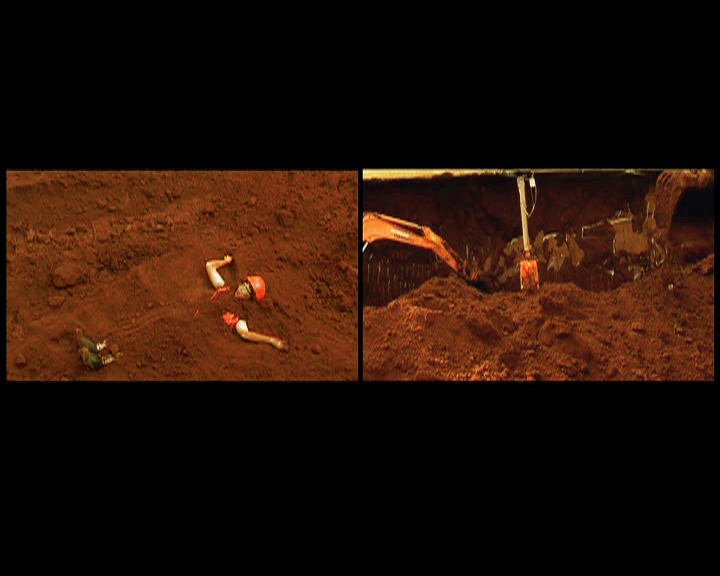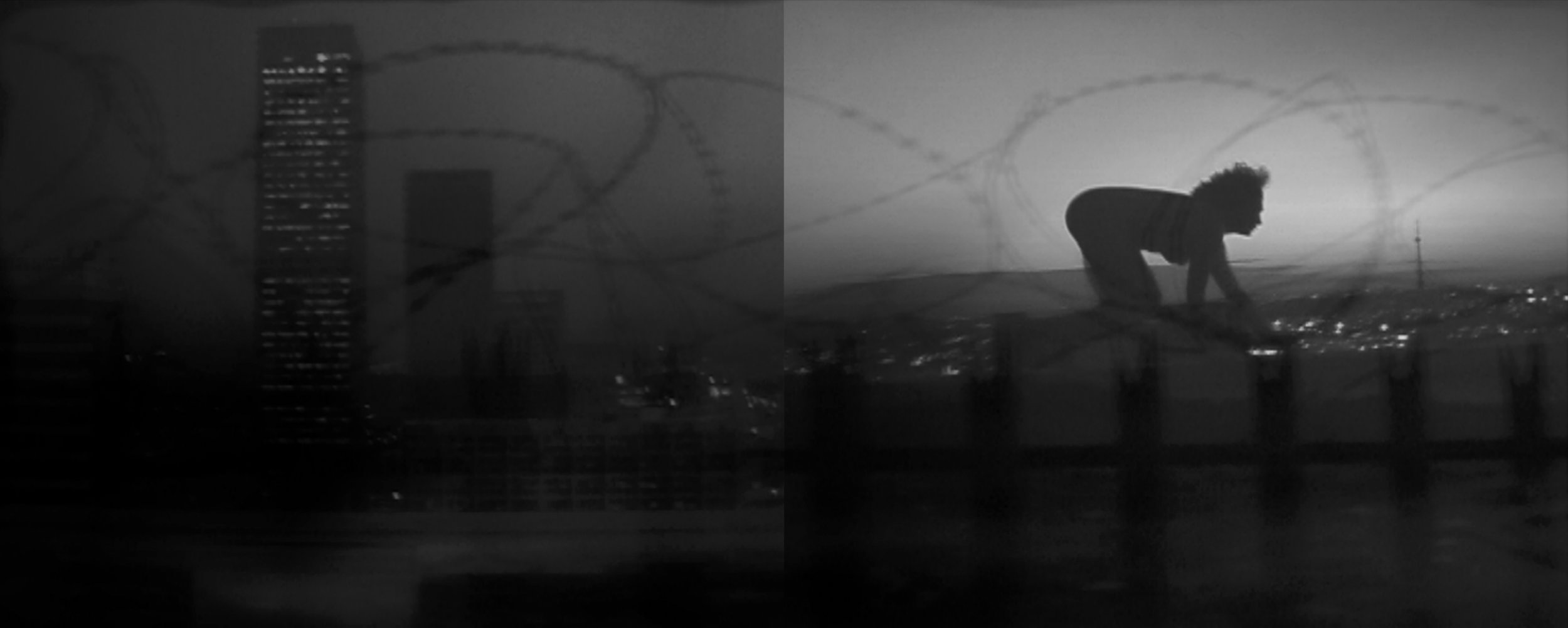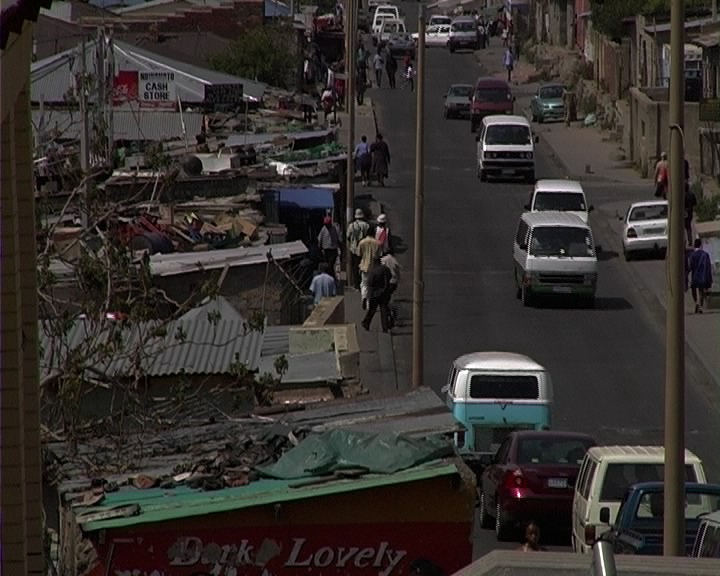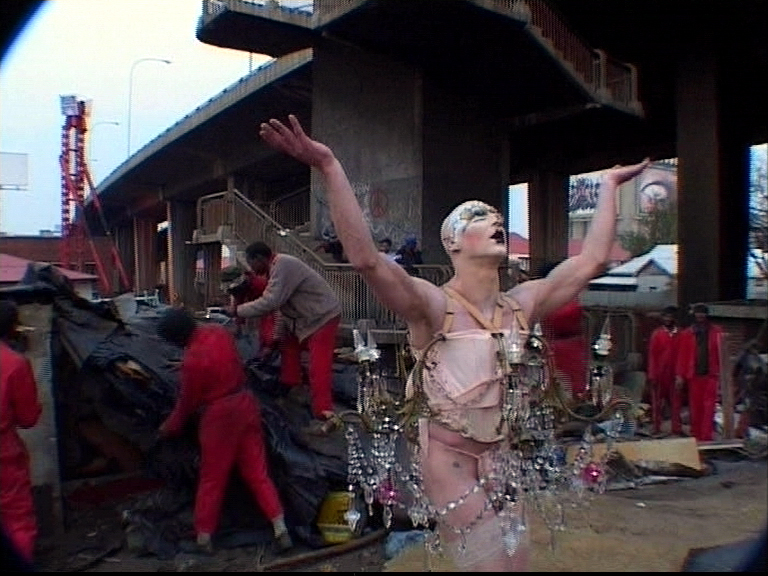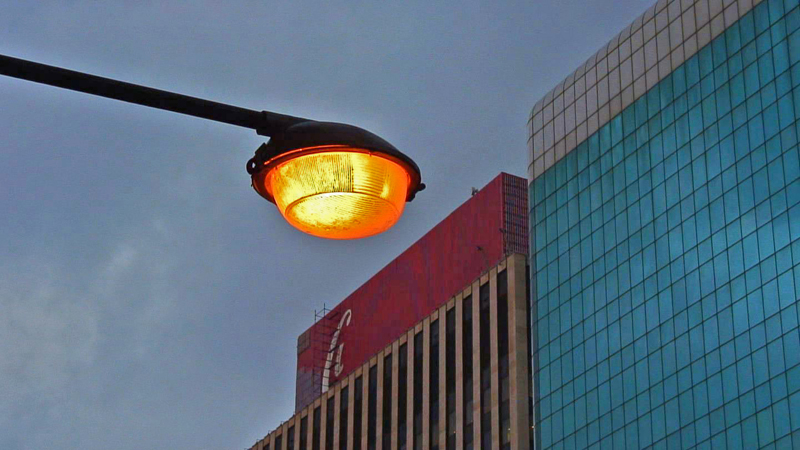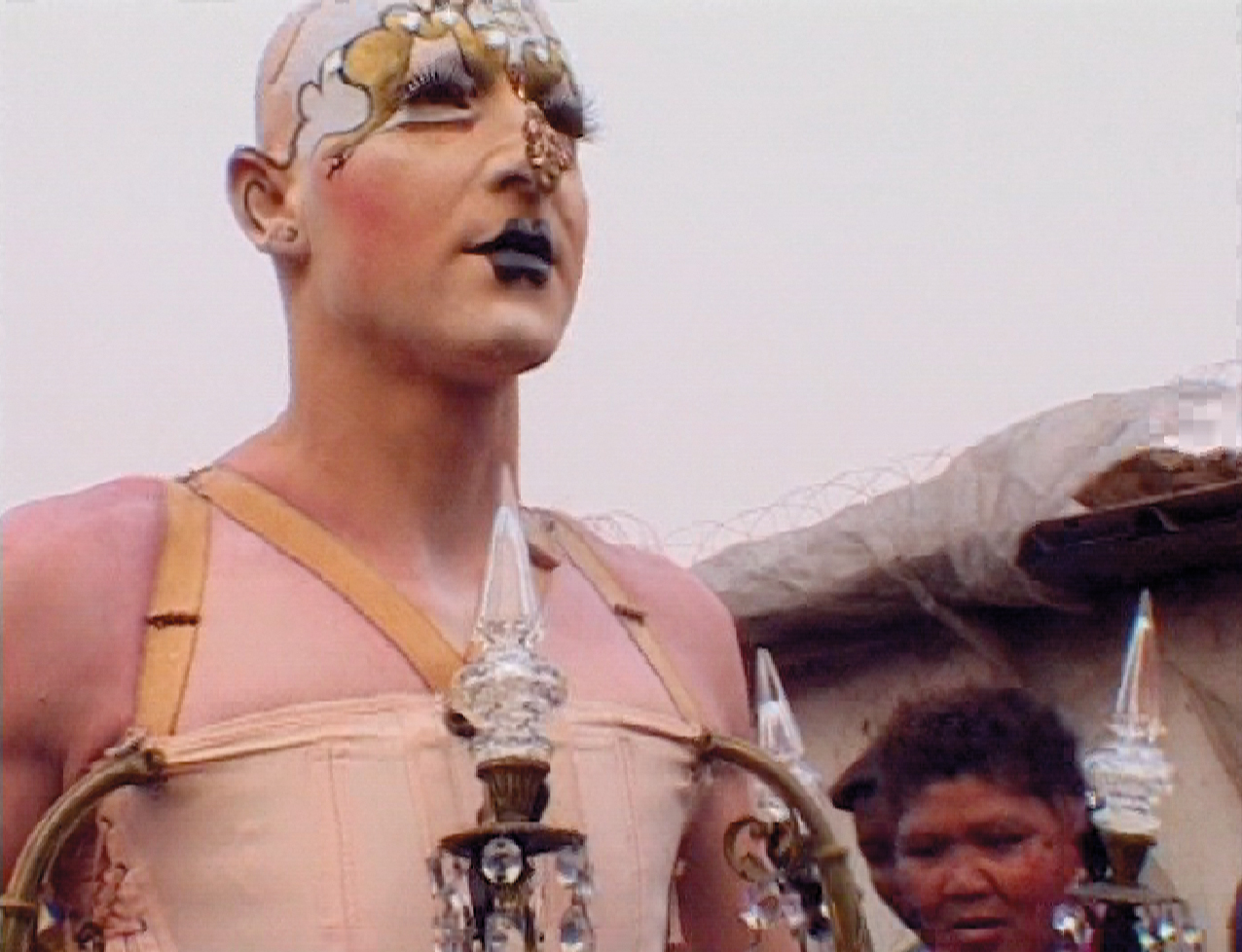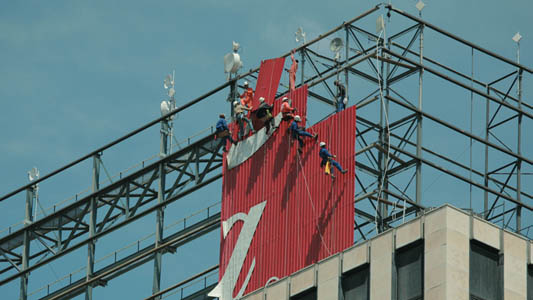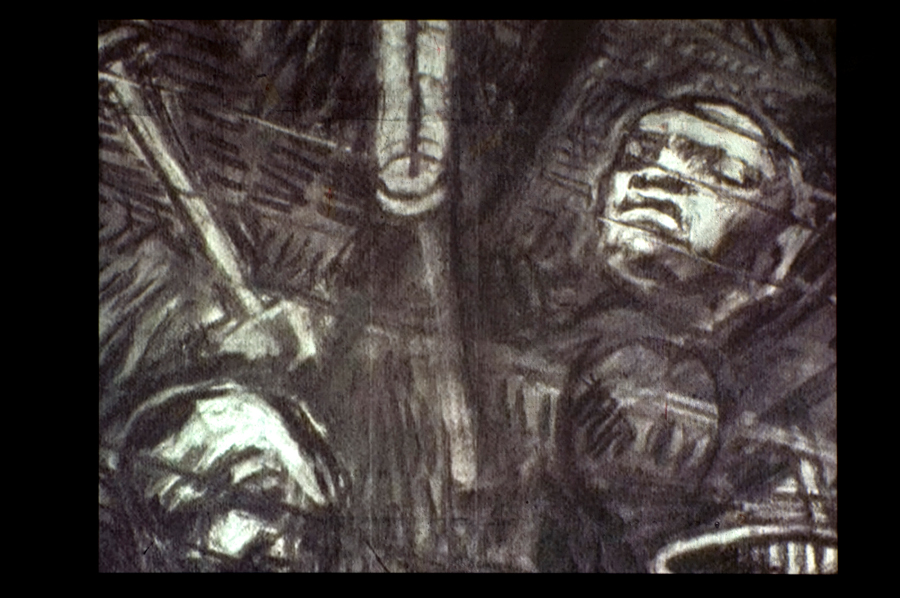TOO CLOSE FOR COMFORT: BELONGING AND DISPLACEMENT IN THE WORK OF SOUTH AFRICAN VIDEO ARTISTS
CURATED BY LEORA FARBER, LEE-AT MEYEROV AND LUCY RAYNER
April 11, 2008 | Intermission, Johannesburg
20 September, 2008 | Hebbel Theatre, Berlin
28 November, 2008 | Goethe Institute, Johannesburg
TOO CLOSE FOR COMFORT: BELONGING AND DISPLACEMENT IN THE WORK OF SOUTH AFRICAN VIDEO ARTISTS
Curated by Leora Farber, Lee-At Meyerov and Lucy Rayner
In collaboration with David Krut films, VIAD presented a once-off screening of the video programme titled Too Close for Comfort, Belonging and Displacement in the work of South African Video Artists at the Hebbel Theatre, Berlin, as part of the visual and performing arts festival Africa Now (18-27 September 2008). The festival was interdisciplinary, featuring South African visual and performance artists such as Athi-Patra Ruga, Nandipha Mntambo and the Gugulective; theatre productions such as writer, theatre director and filmmaker Mphmelelo Paul Grootboom’s Township Stories and Johannesburg-based dancer, Nelisiwe Xaba in collaboration with Kettly Noël in a performance titled Correspondances, which dealt with cultural exchanges between Europe and Africa.
Participating artists were Stephen Hobbs, Minnette Vári, William Kentridge, Mocke Jansen van Veuren and Theresa Collins, Anthea Moys, Steven Cohen, Sam Nhlengethwa, and Nadine Hutton. The screenings were accompanied by a catalogue, produced collaboratively between VIAD, the Goethe Institute and David Krut Publishing.
This re-curated screening by Leora Farber and Lee-At Meyerov was based on the original curated screening which was held at Intermission – an inner-city space in Johannesburg ‒ on April 11 2008. The original screening formed a complimentary event to the Johannesburg and megacities phenomena colloquium, hosted by VIAD.
In the initial screening, selected definitions of self and other provided a framework through which the curators used the programme to explore how the artists re-conceptualise, re-negotiate and re-imagine their relationships to Johannesburg and particularly its inner-city. In so doing, it emerged that most of these artists occupy dual subjectivities in relation to the city, working from positions of inclusion – insider (inhabitant) and exclusion – outsider (immigrant), and, at times, occupy an in-between space of ambiguity between these subjectivities. Many of the artists were present at the event and gave short presentations on their work.
The evening included the following works:
* Judith Erasmus: Homelessness and Hope – Ponte City (2007)
* Ismail Farouk: Majesty Wholesalers (video installation) (2008)
* Stephen Hobbs: Out of Order – A User’s Guide to a Dysfunctional City (1997)
* Nadine Hutton: Night Watch (Zion and Nugget) (2006); Ignore Me (2008)
* Mocke Jansen van Veuren and Theresa Collins: minutes (2007)
* William Kentridge: Sobriety, Obesity and Growing Old (1991)
* Alastair Mclachlan: Coke Light – The On-Off Side of Life (2007)
* Anthea Moys: Boxing Project (2007); Guarded Relaxation (2007)
* Jo Ractcliffe and Sebastian Diaz Morales: One Year Later (2001)
* Minnette Vári: The Calling (2003)
* Rat Western: Tarot of Johannesburg (performance) (2008).
The themes detailed below emerged through the programme.
* Alienation and/or displacement in relation to the inner-city, and in the case of Hobb’s work, Out of Order – A User’s Guide to a Dysfunctional City (1997), to suburban Johannesburg. In their works and preceeding talks, several artists spoke of their sense of displacement in Johannesburg, observing that they feel not unlike immigrants or outsiders in the city in which they live and work. These feelings seem to hinge around issues of belonging and home, given the rapidly accelerated processes of growth and transformation which the post-apartheid city has undergone, and is still, in the process of undergoing.
* Complex, interwoven formations of tension, violence and dis-ease, which constitute the underlying surface of the city. This is exemplified in Vári’s work, The Calling (2003), in which, through visually and conceptually densely layered, evocative imagery, the artist metaphorically grapples with these underlying formations lying beneath visible surface of the city. This grappling, whilst physical, points to an accompanying psychological dimension.
* The city as inscribed upon and enacted through the body. Both of these themes are manifest in The Calling, in which Vári represents herself as part-monster, part-gargoyle and part-cyborg, engaged in a process of negotiating precarious terrain from an aerial vantage point in the midst of the cityscape. Use of her body suggests a sense of psychological trauma. The city as enacted through the body is differently represented in Hutton’s work Night Watch (Zion and Nugget) (2006), which depicts Zionist communities worshipping in an empty school hall. Here the rhythmic swaying, spinning, chanting and whirling of bodies in prayer blur to form a visual equivalent of trance-like, heightened spiritual states of being within an urban context. The context of the school-hall and the bodies engaged worship meld, giving a sense of the urban fabric of the city and body as integral to each other.
* The city as being in a constant state of transformation; captured as transient, fleeting, ephemeral, and random moments in time. In this regard, the city might be likened to an organism continually mutating; shifting shape and form. This liminal state of ‘in-betweenness’ – an unfixed position between being unformed and definitiveness – and the sense of instability that this might result in, is articulated in Ractcliffe and Diaz’s work, One Year Later (2001). Here the narrative is developed through the internal dialogue of the central character, who makes his way through the city, with interjections by the artists as ‘constructors’ of the film. The film was made from strips of photographic slide images, which were pulled across a lightbox and filmed with a video camera. The viewer watches sequences of images, taken from the inner-city, surrounding mine dumps, freeways and the nothern suburbs, become a blur of fleeting moments of, and over, time. Jansen van Veuren and Collins’ work minutes (2007), reiterates this sense of the city in constant motion, albeit through different means. Through timelapse photography and experimental sound recordings, the dual projections depicting diverse areas of Johannesburg appear as dynamic, ever-changing, and ever-moving. The compression of time reveals rhythms of everyday life, allowing viewers to re-evaluate their experiences and assumptions of the everyday. ‘Public’ and ‘private’ spaces intersect through movement, time and patterns of spatial practice.
* The artist, and consequently the viewer, as voyeur. In works such as minutes and Night Watch (Zion and Nugget), the viewer is aware that the spaces filmed are ones which are inhabited by others. This is particularly evident in Hutton’s case, where others are filmed in a private space of spiritual trance. Similarly, minutes deals with the appropriation of potentially hostile urban spaces; transitory spaces; the spontaneous or orchestrated occupation of spaces; signs denoting desires for the ownership of space; the mingling of lives in public recreational spaces and the simulation of public spaces within privatised enclosures – all of which prompt a certain kind of voyeristic relation to space and those who inhabit it.
* Issues surrounding safety, security, surveillance and paranoia. These are explored in Moy’s performative work Guarded Relaxation (2006), in which a group of people are shown taking ‘relaxation lessons’ at Zoo Lake, whilst being watched and guarded by armed security guards, and in Hobbs’s Out of Order – A User’s Guide to a Dysfunctional City.
* The interweaving of public and private domain; personal and public histories. These meld seamlessly into one another in works such as Sobriety, Obesity and Growing Old, (1991) by Kentridge.
* The city as being constantly reinvented/remade/re-inscribed. This is articulated in Mclachlan’s work Coke Light ‒ The On-Off Side of Life (2007). The work depicts the Coca-Cola LCD billboard situated on top of the Marble Towers in the inner-city, which has been erected and dismantled three times in the last three years, finally succumbing to irreconcilable budget deficits.
EXHIBITION:
Johannesburg and Megacity Phenomena
PUBLICATION:
Representation & Spatial Practices in Urban South Africa

